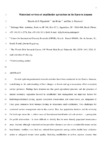Use este identificador para citar ou linkar para este item:
http://www.alice.cnptia.embrapa.br/alice/handle/doc/953081Registro completo de metadados
| Campo DC | Valor | Idioma |
|---|---|---|
| dc.contributor.author | FIGUEIREDO, R. de O. | pt_BR |
| dc.contributor.author | BORNER, J. | pt_BR |
| dc.contributor.author | DAVIDSON, E. A. | pt_BR |
| dc.date.accessioned | 2013-03-18T23:32:43Z | - |
| dc.date.available | 2013-03-18T23:32:43Z | - |
| dc.date.created | 2013-03-14 | pt_BR |
| dc.date.issued | 2012 | pt_BR |
| dc.identifier.citation | In: ECOLOGICAL ECONOMICS AND RIO+20: CHALLENGES AND CONTRIBUTIONS FOR A GREEN EONOMY - ISEE CONFERENCE, 2012, Rio de Janeiro. Proceedings... Rio de Janeiro: International Society for Ecological Economics (ISEE), Brazilian Society for Ecological Economics (ECOECO), 2012. | pt_BR |
| dc.identifier.uri | http://www.alice.cnptia.embrapa.br/alice/handle/doc/953081 | pt_BR |
| dc.description | Abstract: Several hydrobiogeochemical research activities have been conducted in the Eastern Amazon, contributing to the understanding of how changes in forests and agro-ecosystems affect ecosystem service provision. Findings have demonstrate that good agricultural practices and the presence of natural secondary vegetation favored by smallholder farm management are important factors for hydrobiogeochemical cycling, aquatic ecosystem conservation, soil conservation, and mitigation of trace emissions from biomass burning in Amazonian small catchments. Two challenges for watershed service management arise in this context. First, low population densities and the relatively flat landscape mean that a critical mass of downstream beneficiaries of such services - a prerequisite for public intervention - is more difficult to identify than in more densely populated mountainous areas. Second, although watershed service providers (farmers) are also to considerable extent service beneficiaries, conflicts over land and cultural heterogeneities among settlers inhibit local collective action to safeguard stream water quality. Including smallholders in carbon payment schemes that and other alternatives to slash-and-burn agriculture by compensating farmers for additional watershed services, including forest conservation. The development of payments for watershed services schemes currently hinges on a better understanding of the biophysical determinants of hydrological service provision, especially in the Amazon region. | pt_BR |
| dc.language.iso | eng | eng |
| dc.rights | openAccess | eng |
| dc.subject | Eastern Amazon | pt_BR |
| dc.subject | Smallholder agriculture | pt_BR |
| dc.subject | Watershed services | pt_BR |
| dc.subject | Stream water quality | pt_BR |
| dc.subject | Hydrobiogeochemical | pt_BR |
| dc.subject | Payments for ecosystem services | pt_BR |
| dc.title | Watershed services of smallholder agriculture in the Eastern Amazon. | pt_BR |
| dc.type | Artigo em anais e proceedings | pt_BR |
| dc.date.updated | 2013-03-18T23:32:43Z | pt_BR |
| dc.subject.nalthesaurus | good agricultural practices | pt_BR |
| dc.subject.nalthesaurus | watershed management | pt_BR |
| dc.format.extent2 | 21 p. | pt_BR |
| riaa.ainfo.id | 953081 | pt_BR |
| riaa.ainfo.lastupdate | 2013-03-18 | pt_BR |
| dc.contributor.institution | RICARDO DE OLIVEIRA FIGUEIREDO, CNPMA; Center for International Forestry Research (CIFOR) - RIo de Janeiro; The Woods Hole Research Center - USA. | pt_BR |
| Aparece nas coleções: | Artigo em anais de congresso (CNPMA)  | |
Arquivos associados a este item:
| Arquivo | Descrição | Tamanho | Formato | |
|---|---|---|---|---|
| AAFigueiredoROISEEConference201221p.pdf | 604,64 kB | Adobe PDF |  Visualizar/Abrir |









